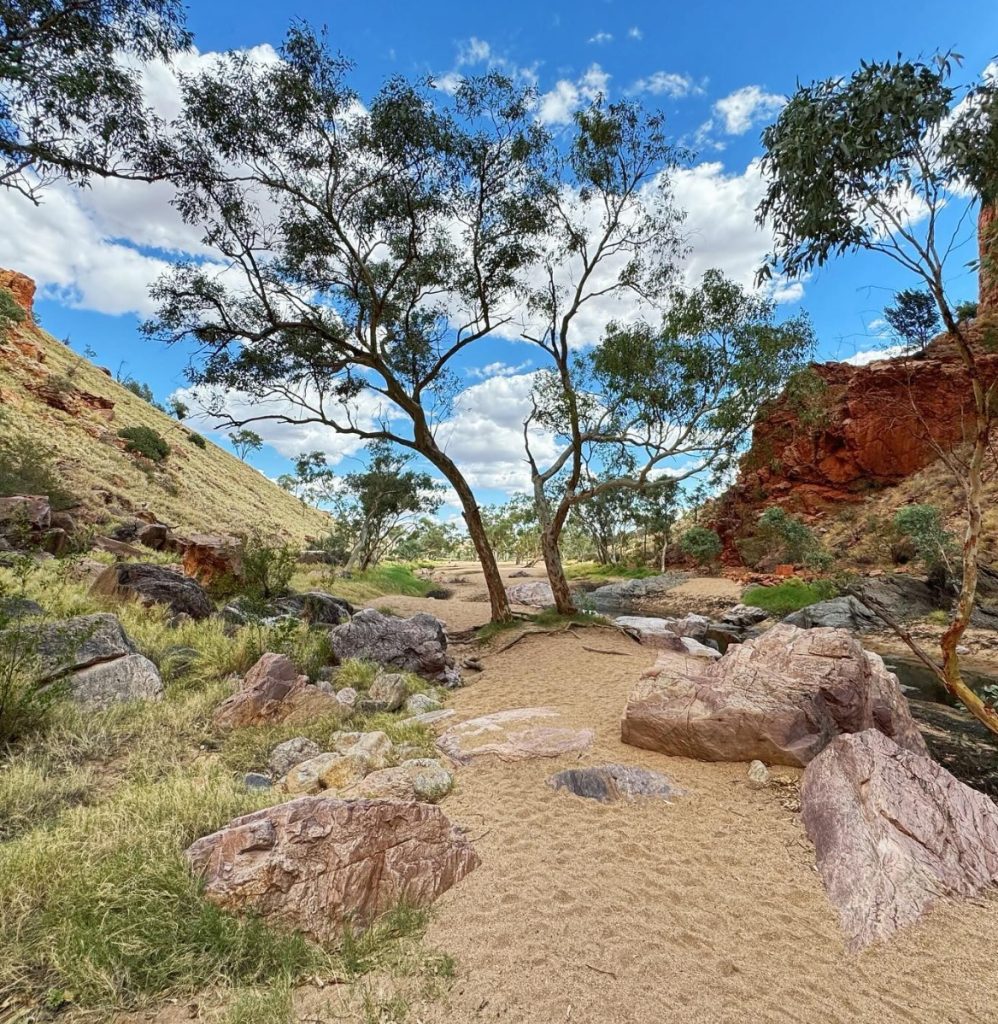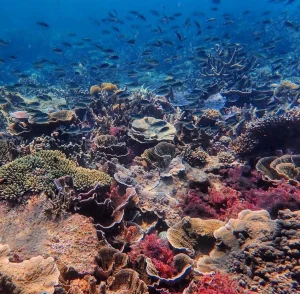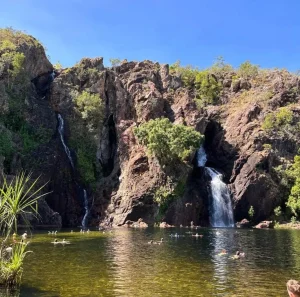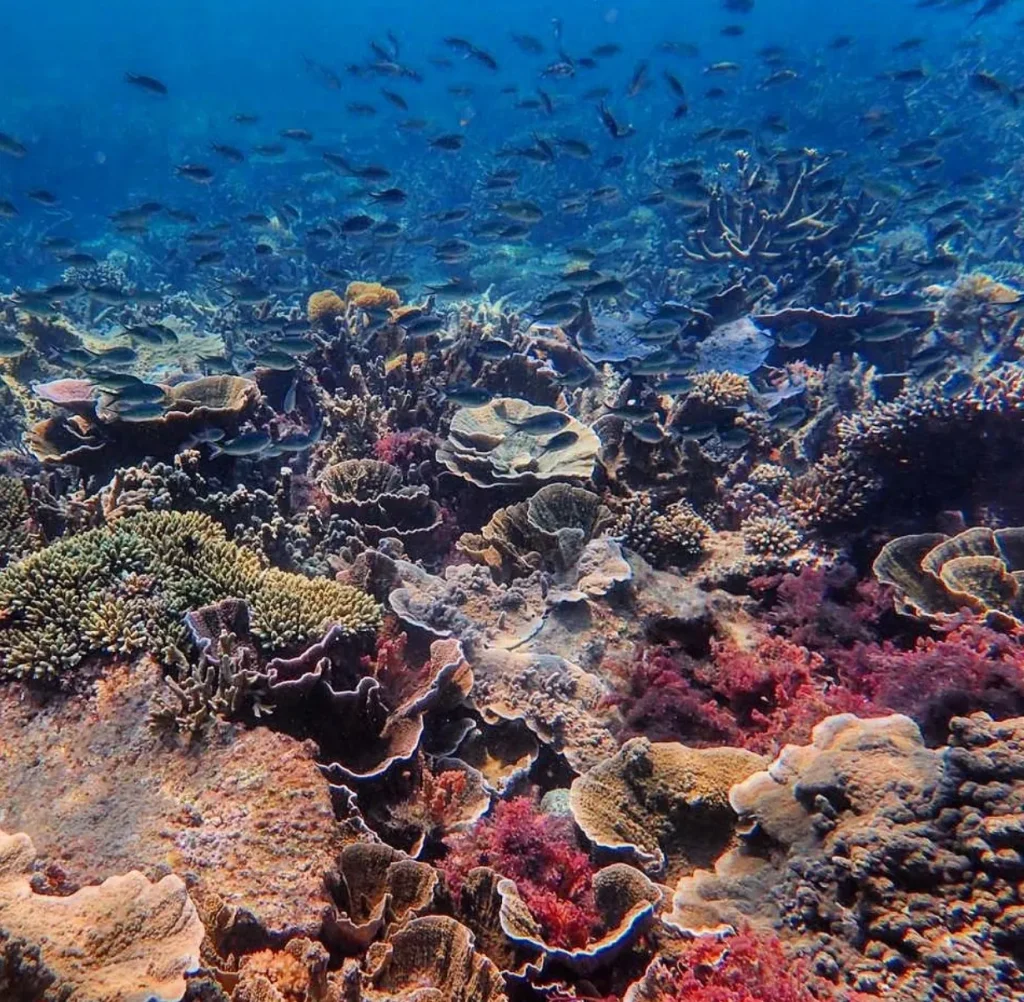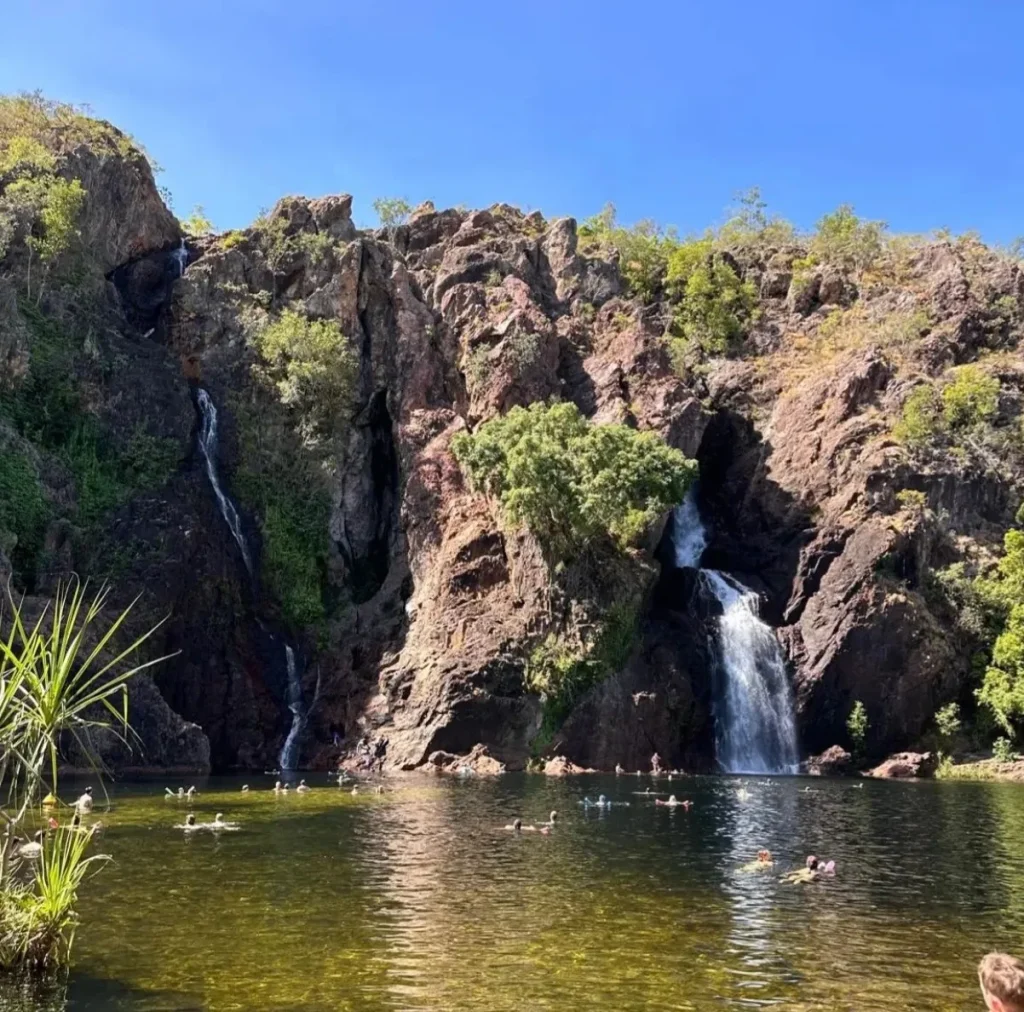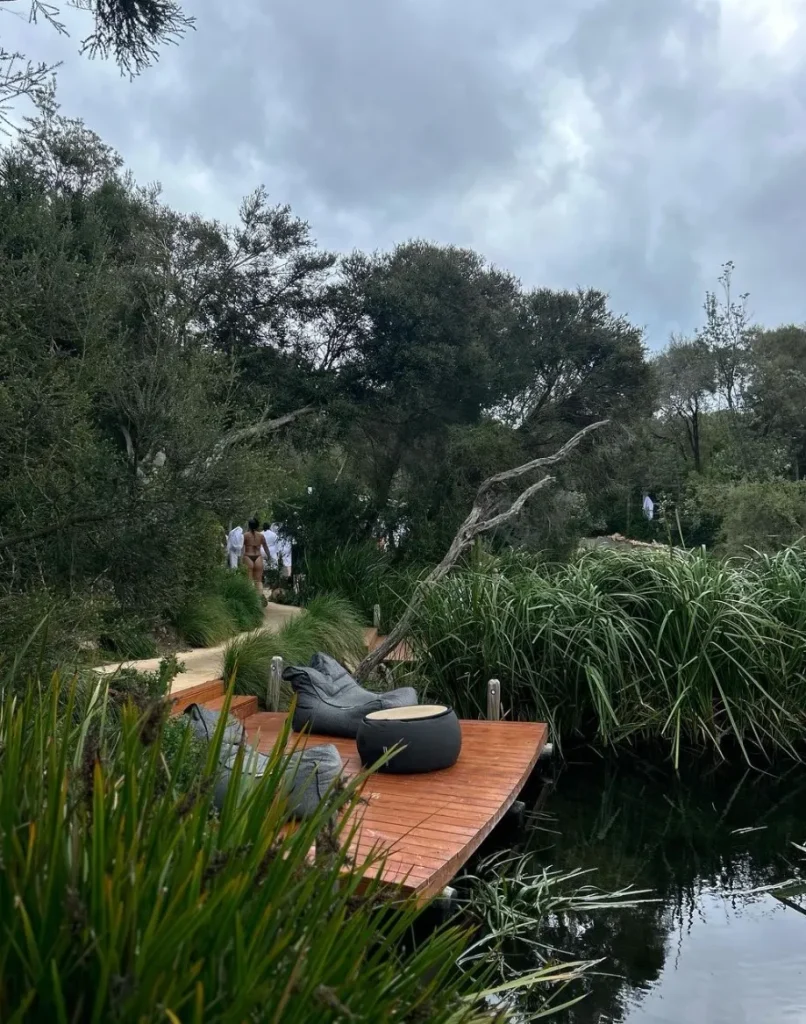Camping in the West MacDonnell National Park, also known as West MacDonnell Ranges Tjoritja, is a real Outback adventure with gorges, lookouts and lots of space to get amongst the natural beauty of the Northern Territory. From Serpentine Gorge to Mount Sonder, West MacDonnell Ranges is perfect for nature lovers, experienced walkers and day visitors. In this longer guide, we’ll cover the best campsites and all the essentials for a safe and fun day trips from Alice Springs.
Best Campsites in the West MacDonnell Ranges
Ellery Creek Big Hole
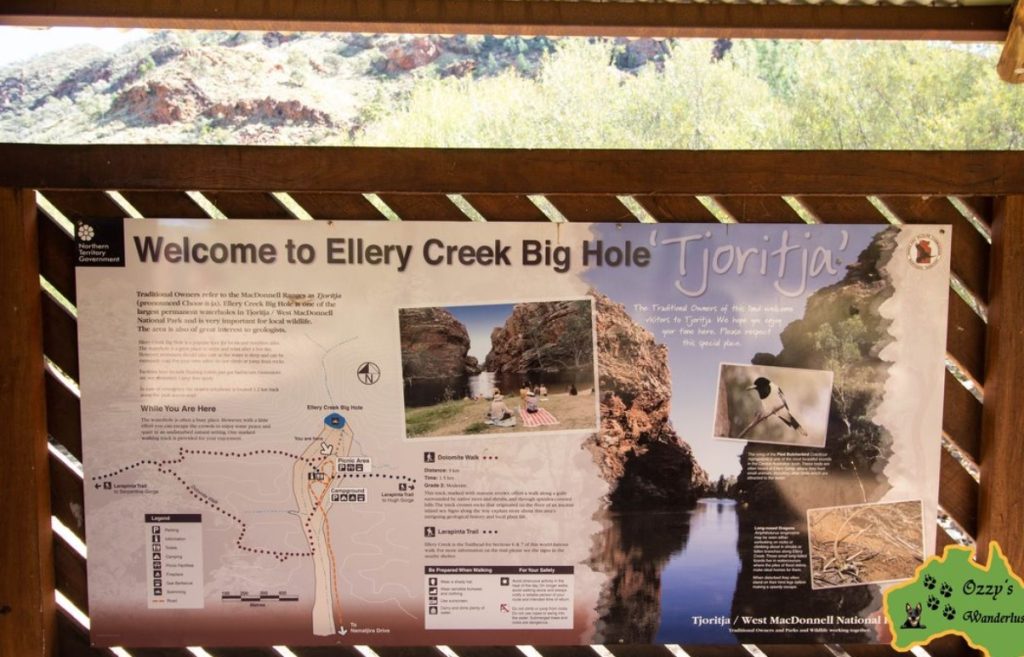
A permanent waterhole surrounded by cliffs, Ellery Creek Big Hole, is one of the most popular campsites in the West MacDonnell Ranges Tjoritja. The red rock walls against the blue water are a picture-perfect setting that attracts campers, swimmers and photographers. The campsite has basic facilities – public toilets, shaded picnic tables and plenty of space to camp – making it perfect for families, groups and day visitors. After a long day of walking on the tracks, a dip in the waterhole is the best way to cool off, especially in the warmer months when the Outback can get very hot. In the winter months, the area is quieter, with fewer visitors, and you can appreciate the stark beauty of the arid landscape and dry river beds.
Ormiston Gorge
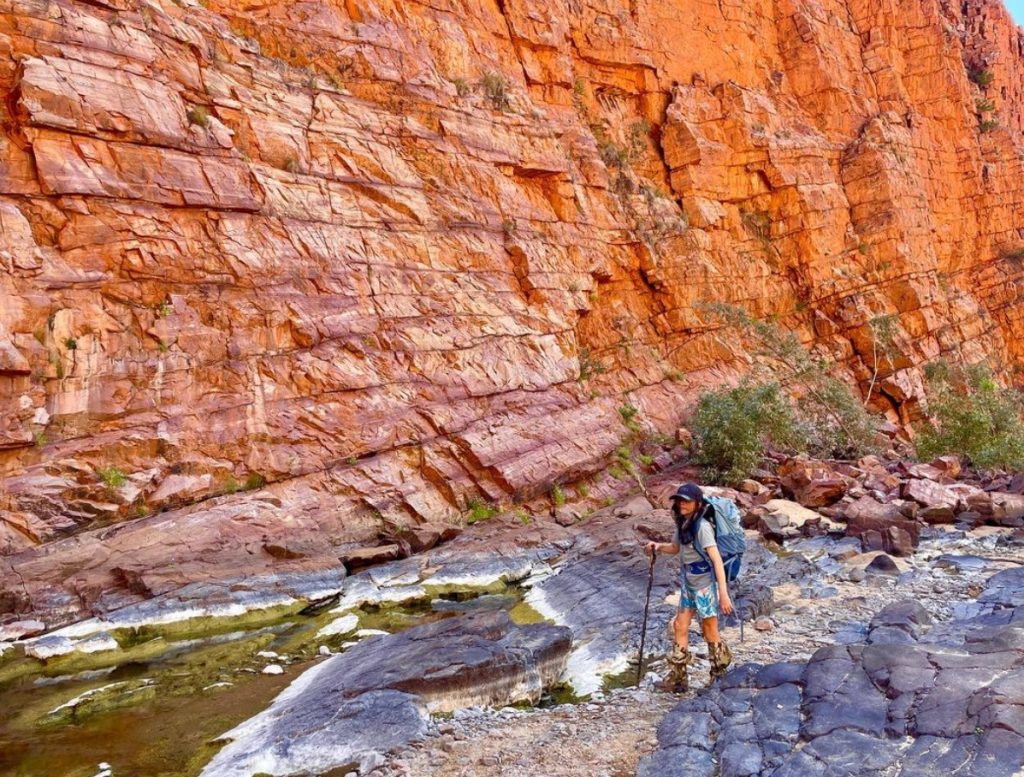
Famous for its rock walls, views and unique flora and fauna, Ormiston Gorge is a must-camp destination. The campsites have access to hot water showers, a well-maintained toilet block and numerous marked tracks to explore the gorge’s varied terrain. One of the highlights of Ormiston Gorge is the Ormiston Pound Walk, a 3-4 hour walk that takes you through views of the entire landscape, including the surrounding mountain ranges and ancient river systems. If you want a panoramic view, head to the Neil Hargrave Lookout, and you’ll be rewarded with views of the gorge’s cliffs and the Outback beyond.
Glen Helen Gorge
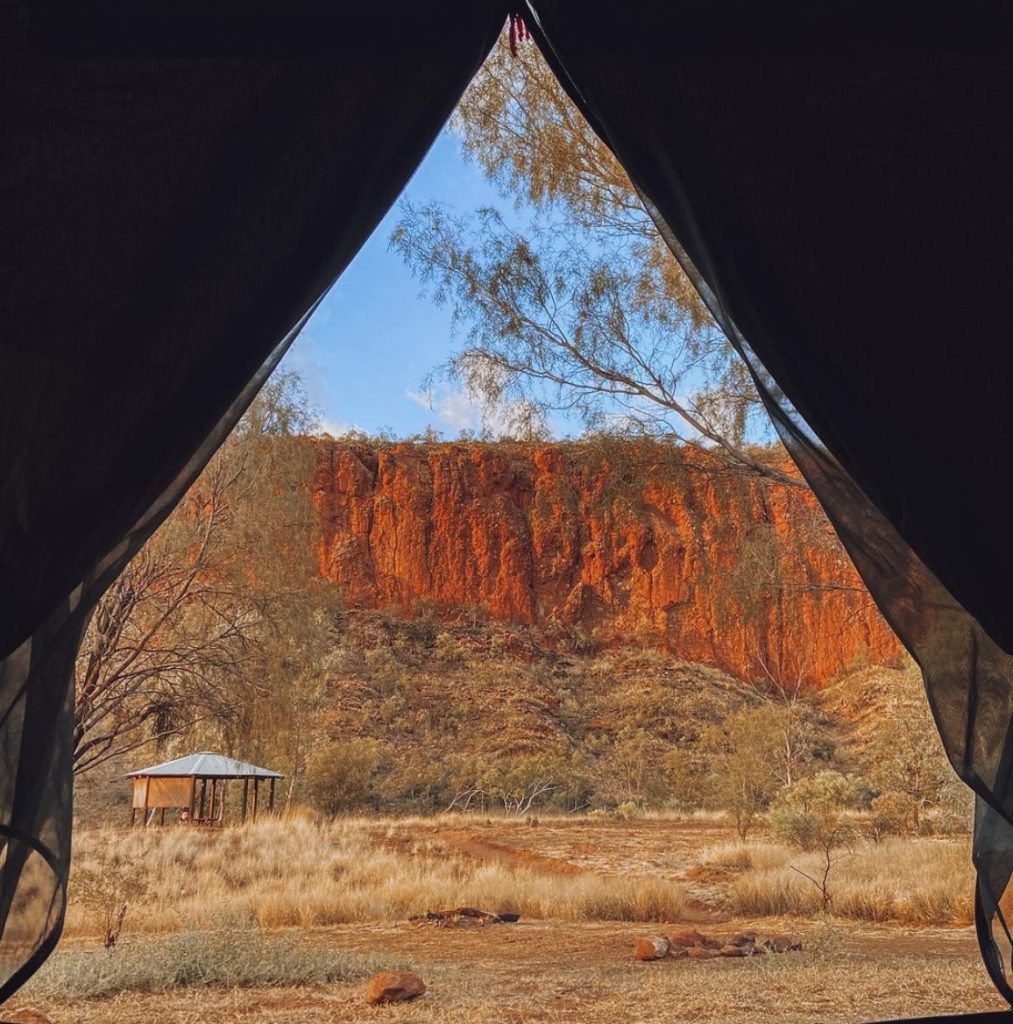
Located near Glen Helen Lodge, this campsite is more than just a place to camp – it’s a hub of comfort for those who want to experience the Outback without giving up modern amenities. In addition to showers and public toilets, Glen Helen has a restaurant and bar so you can grab a meal after a day of walking. The gorge is surrounded by red cliffs and the ancient Finke River, one of the oldest river systems in the world. Glen Helen Gorge is a great base from which to explore Redbank Gorge, Mount Sonder, and other natural attractions in the area. Swimming in the waterhole at Glen Helen is a cool treat, especially in the hot Outback. For those interested in local culture, there is also Aboriginal history and traditions in the area.
Redbank Gorge
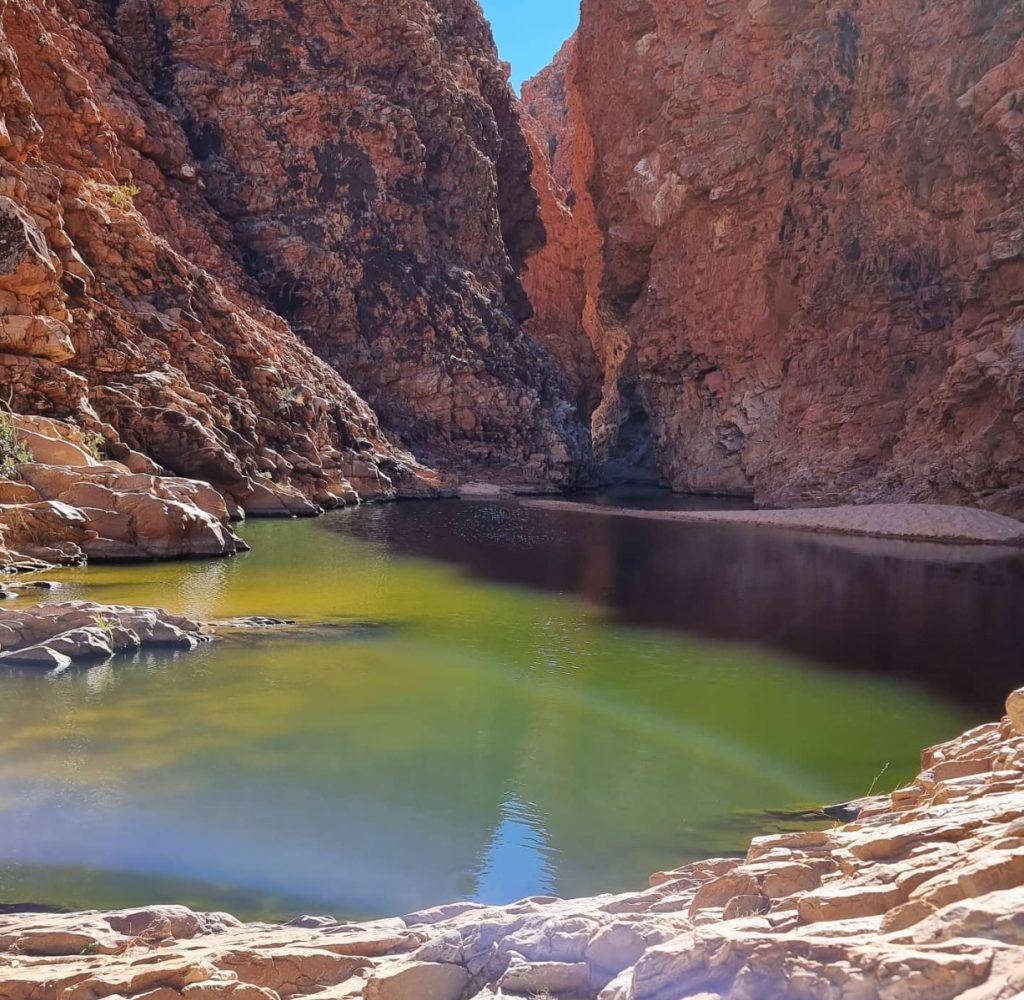
For a more remote and isolated camping experience, Redbank Gorge is the place to go. Accessible by unsealed road, the journey to the gorge is part of the adventure itself, with stunning views of the rugged landscape. Unpowered sites and basic facilities, so you can really get back to nature. The main attraction here is the gorge itself, where you can swim in the temporary waterhole surrounded by towering cliffs and ancient rock formations. Redbank Gorge is also the start of the Mt Sonder Lookout hike, which has some of the best views in the ranges. If you’re feeling adventurous, the gorge is a great entry point to the Larapinta Trail, one of Australia’s premier hiking trails that goes through the West MacDonnell National Park.
Simpsons Gap
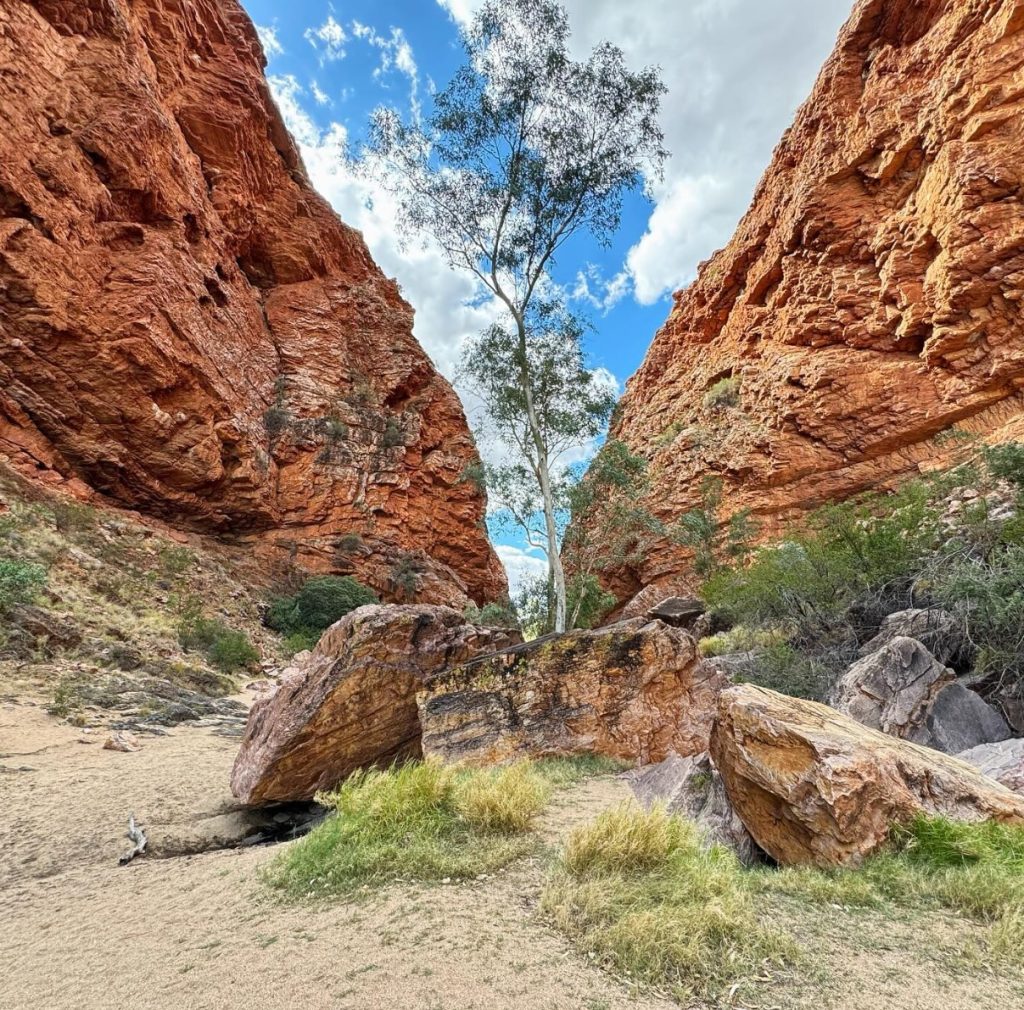
Only 10 minutes from Alice Springs, Simpsons Gap is a peaceful and easy camping spot for short stays or longer adventures. The gorge is famous for its dramatic rock walls and shy black-footed rock wallabies which are often seen at dusk. The picnic facilities here, with shaded picnic tables and open spaces, are perfect for families, day visitors, and those just wanting to relax in nature. Beyond the natural beauty of the gap, Simpsons Gap has deep cultural significance for the local Aboriginal community. The site is part of the traditional lands of the Aboriginal community and is an opportunity to connect with the cultural history of the area. As you walk through the gap and surrounding area, you will gain a deeper understanding of the ancient stories and sacred connections that have shaped this land.
Other places in the West MacDonnell Ranges
- Serpentine Gorge: A rocky gorge with deep swimming holes and great scenery. Walking tracks around the gorge to explore its features.
- Trephina Gorge Nature Park: In the East MacDonnell Ranges, this park has camping facilities and gorges Trephina Gorge and N’Dhala Gorge. A quieter option if you want to get away from the crowds.
- Finke Gorge National Park: Rugged and culturally significant, this park has the Finke 2-Mile 4WD camping spot and access to Aboriginal rock paintings and Indigenous rock carvings.
Camping tips
- Bring water: The Outback is dry and you will need to carry plenty of water especially in the warmer months. Non drinking water may be available at some campsites but bring your own drinking water.
- Road conditions: Some campsites are accessed by unsealed roads, like Redbank Gorge or Finke Gorge National Park. Check road conditions before you go, and if you have a clearance 4WD, you’ll be better equipped for dirt roads and sand drifts.
- Respect Aboriginal cultural heritage: The traditional owners of the land have a deep connection to the area. Some places like Corroboree Rock Conservation Reserve and Owen Springs Homestead give you a glimpse into the Aboriginal history and sacred sites of the region.
- Camping fees: Some campsites have an entry fee or camping fee, often in an honesty box. Bring cash for camping fees.
- Phone reception: Phone service is limited in many areas of the range, so if you’re going into more remote areas, consider bringing a satellite phone. Some areas, like Glen Helen Lodge, may have a phone tower, but this is not guaranteed.
- Wildlife: You’ll see a lot of wildlife in the ranges, from roos to birds. Always keep a distance and don’t feed the animals to protect both the wildlife and the environment.
Conclusion
Camping in the West MacDonnell Ranges is an adventure like no other. Whether you’re hiking the Larapinta Trail, exploring Kings Canyon or simply relaxing by a waterhole, the whole landscape is unique.
FAQ
What are the best times to camp in the West MacDonnell Ranges?
The cooler months April to September are best for camping, milder temperatures for hiking. The dry season is more comfortable for camping and the wet season is best avoided due to flash flooding in gorges.
Are there any campsites with facilities in the West MacDonnell Ranges?
Yes, many campsites like Ormiston Gorge and Glen Helen Gorge have facilities like hot showers, toilet facilities and even an on-site country store. Some more remote sites like Redbank Gorge have basic facilities only.
What’s the road access to the campsites?
Varies. Some sites like Simpsons Gap are sealed roads, others like Redbank Gorge are gravel roads or unsealed roads. Be prepared for changing conditions and 4WD vehicles are recommended for more remote areas.
Do I need to bring my own water to the campsites?
Yes, you must bring your own drinking water. Some campsites have non-drinking water for cleaning but potable water is not always available.
What wildlife will I see while camping?
You’ll see a lot of wildlife, roos, wallabies and birds like eagles. Keep an eye out for black-footed rock wallabies at Simpsons Gap and be mindful of reptiles and insects especially in the warmer months.
